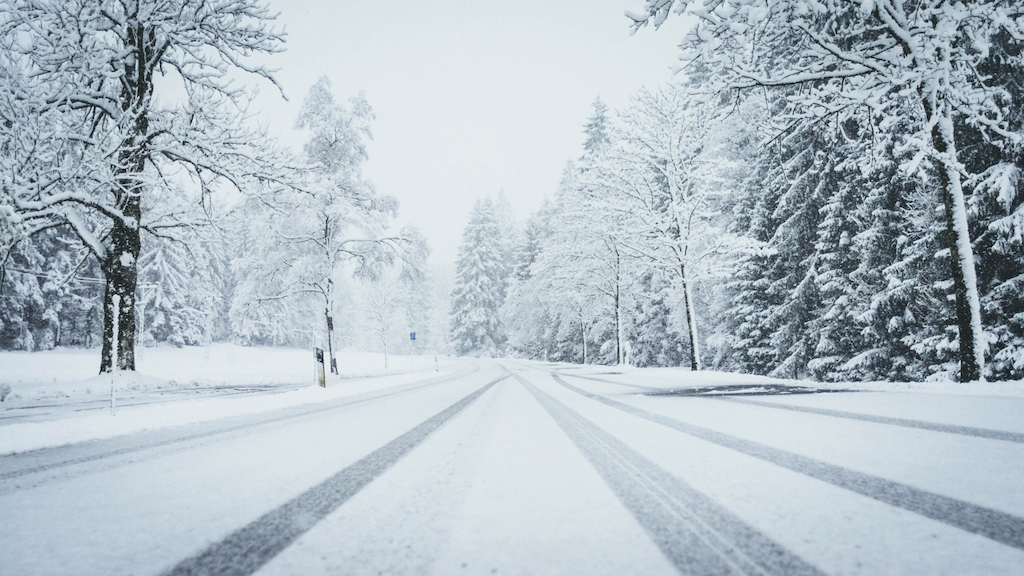Winter overlanding is a unique adventure that brings a different level of challenge and beauty to your travels. From snow-covered landscapes to frozen lakes and rivers, winter overlanding offers a chance to experience the great outdoors in a new and exciting way. In this article, we’ll explore the basics of winter overlanding and what you need to know before setting out on your next adventure.

Preparing Your Rig
Winter overlanding requires a different level of preparation compared to summer overlanding. Your vehicle and gear need to be equipped to handle harsh winter conditions. Start by making sure your vehicle has proper winter tires, a reliable heater, and an efficient battery. Consider adding additional insulation to your windows, roof, and floor to help keep your vehicle warm during the coldest days. Make sure your engine oil is appropriate for cold weather and check all fluid levels to ensure they are topped off.
Also, be sure to pack enough warm clothing, sleeping gear, and food to last the duration of your trip. You may need to carry extra fuel and water to make it through the remote areas you’ll be visiting. Keep in mind, the weather can change quickly in winter, so always be prepared for the unexpected.

When it comes to winter overlanding, it’s important to remember that the terrain can be much more challenging than it is in the summer. Snow and ice can make it difficult to drive, so make sure you have experience driving in these conditions before setting out. Additionally, be prepared for limited visibility and the possibility of getting stuck in the snow.
To help you navigate the winter terrain, consider investing in a set of snow chains or snow tires. These will provide better traction and stability, making it easier to drive through deep snow and icy roads. Additionally, carry a shovel and sand or kitty litter in your vehicle, which can be used to help you regain traction if you get stuck.
Embracing the Beauty of Winter
Despite the challenges of winter overlanding, it’s important to embrace the beauty of the season. The winter landscape is a breathtaking sight to behold, and the quiet and serenity of the great outdoors can be truly magical. Whether you’re exploring frozen lakes, snow-covered forests, or remote mountain passes, winter overlanding offers a unique and rewarding experience.

Where to go? 🌎
The United States offers many great destinations for winter overlanding, including:
Rocky Mountains – Colorado, Utah, Wyoming: The Rocky Mountains offer a diverse range of winter terrain, from high alpine passes to snow-covered forests.
Sierra Nevada Mountains – California: The Sierra Nevada Mountains offer a stunning winter landscape with snow-covered peaks, frozen lakes, and snow-covered forests.
Adirondack Mountains – New York: The Adirondack Mountains are a winter wonderland, with vast expanses of snow-covered forests, frozen lakes, and challenging terrain.
Upper Peninsulalands – Kentucky, Tennessee: The Upper Peninsulalands offer rolling hills, snow-covered forests, and serene winter landscapes that are perfect for winter overlanding.
Cascade Mountains – Washington, Oregon: The Cascade Mountains are known for their heavy snowfall, making them a great destination for winter overlanding. The region offers a mix of snow-covered forests, frozen lakes, and challenging terrain.
These are just a few examples of the many great destinations for winter overlanding in the United States. The best terrain for you will depend on your personal preferences and level of experience, but these destinations are all great places to start exploring the beauty of the winter landscape

Local laws and rules
There are likely to be local laws and rules to be aware of when it comes to overlanding in the winter months. Here are a few things to keep in mind:
- Vehicle Equipment: Some states have specific regulations regarding winter driving, such as the requirement to have snow tires or chains. Be sure to check the laws in the states you plan to visit to make sure your vehicle is in compliance.
- Fire Restrictions: Some areas have restrictions on campfires during the winter months due to increased fire risk. Make sure to research the regulations in the areas you plan to visit, and be prepared to use a portable stove instead.
- Road Closures: Winter weather can cause roads to close, so be sure to check road conditions before you set out and be prepared to alter your route if necessary.
- Permits: Some national forests and other public lands require permits for winter camping, so be sure to research the regulations in the areas you plan to visit and obtain any necessary permits.
- Snowmobile Regulations: Some areas allow snowmobiles on the same roads used by vehicles, so be sure to research the regulations in the areas you plan to visit and make sure you are aware of any restrictions.
- Wildlife Regulations: Some states have regulations regarding the feeding of wildlife, so be sure to research the regulations in the areas you plan to visit and make sure you are aware of any restrictions.
It is important to familiarize yourself with the local laws and regulations in the areas you plan to visit. By doing so, you can ensure a safe and enjoyable winter overlanding experience.
Final Thoughts
Winter overlanding is a unique adventure that offers a chance to experience the great outdoors in a new and exciting way. With proper preparation and the right mindset, it can be an unforgettable experience. So, pack your gear, get your vehicle ready, and hit the road to explore the beauty of the winter landscape. Happy overlanding!
- Tips and tricks For Setting Up Camp Like a Pro - September 11, 2023
- The Best Multi-Tools for Overlanding Adventures - August 25, 2023
- Off-Road Navigation Tips for Overlanders - August 13, 2023


